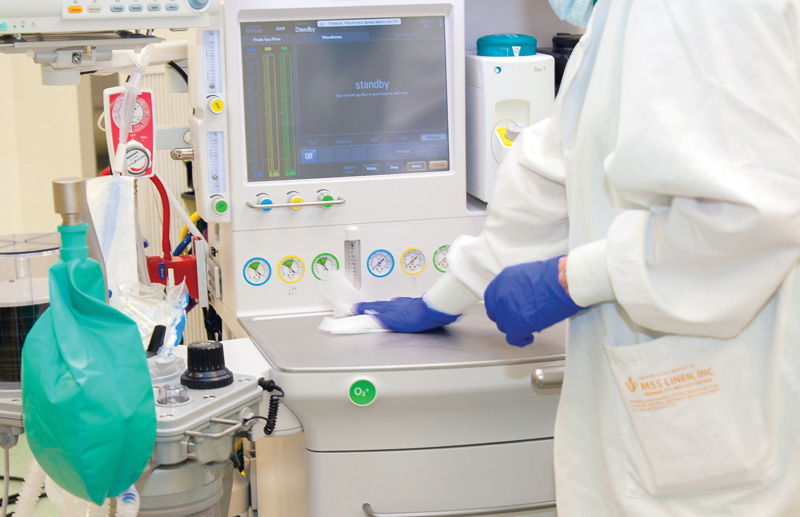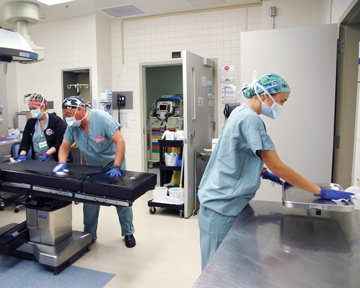Healthcare facilities develop their own cleaning protocols based on CDC guidelines. But what’s printed in the guidelines — what you should be doing — is often not what’s being done in practice. As staff members become
more distant from their original training, many tend to become lax about employing proper cleaning practices.
The intensive terminal cleaning protocol in our study involved not just medical equipment and surfaces, but also walls, floors and curtains. We estimated it would take about 90 minutes to clean the way the protocol described. The average manual
cleaning time we observed turned out to be one-fifth of that.
There’s a wealth of information in the literature about how manual cleaning isn’t as effective as it’s designed to be. That’s partially due to human error, but also because in many facilities there’s not enough
time to follow protocols as written. As a result, we see a lot of “practical” behavior related to the pressure of getting rooms turned over as quickly as possible.
The errors we saw in the ICU room we monitored in our study were many and varied. One common misstep was not cleaning underneath items, and not fully cleaning some frequently touched areas. When cleaning bed handrails, for example, we observed
staff not cleaning around the entire surface of the rail, but instead just wiping over the top of it. Staff wiped down difficult-to-clean surfaces such as remote control buttons and crevices, but did not observe the contact times noted
in the disinfectant’s instructions for use. Door handles, IV poles, tubes and wires that nurses touch frequently were often neglected, as well as soft surfaces such as curtains, fabric chairs and linens, which require different disinfectants
than hard surfaces.
In our study and others, we’ve also observed staff cleaning a contaminated surface and then accidentally contaminating another surface by simply pushing the contaminants around. Consider how clean your cleaning tools are after they’re
used for a period of time. For example, how often do you need to change a mop head? Are you disinfecting it thoroughly between uses? Bacteria can grow on cleaning tools over time.
Another issue is how much concentration of the disinfectant is on a wipe, its dry time and the maximum surface area it can clean before the disinfectant has been dissipated or diluted. If you’re opening and closing a container of disinfecting
wipes, the wipes dry out over time. The last wipe is going to be a lot drier than the first one. Unfortunately, the only guidance you usually have to reference from wipe manufacturers is contact time or how long the surface should remain
wet.
Of course, training, educating and refreshing staff on surface disinfection protocols and compliance is a must. Remember, for the most part, people don’t consciously decide to clean a room in a suboptimal manner. They have a list of
to-do items during turnovers and know someone is waiting outside to bring another patient into the room. They might not be tracking the contact times of the disinfectant on surfaces.
You can monitor compliance easily with a black light or even a common household liquid detergent like Tide that fluoresces. Take a Q-tip and secretly dot the detergent around the room. Let staff clean the room and return to see if they hit
those areas. If your staff knows you’re performing those assessments periodically, it’s in the back of their mind that today might be the day they are evaluated. However, human behaviors often revert to bad habits, and after
a while people forget they’re being watched.
.svg?sfvrsn=be606e78_3)


.svg?sfvrsn=56b2f850_5)